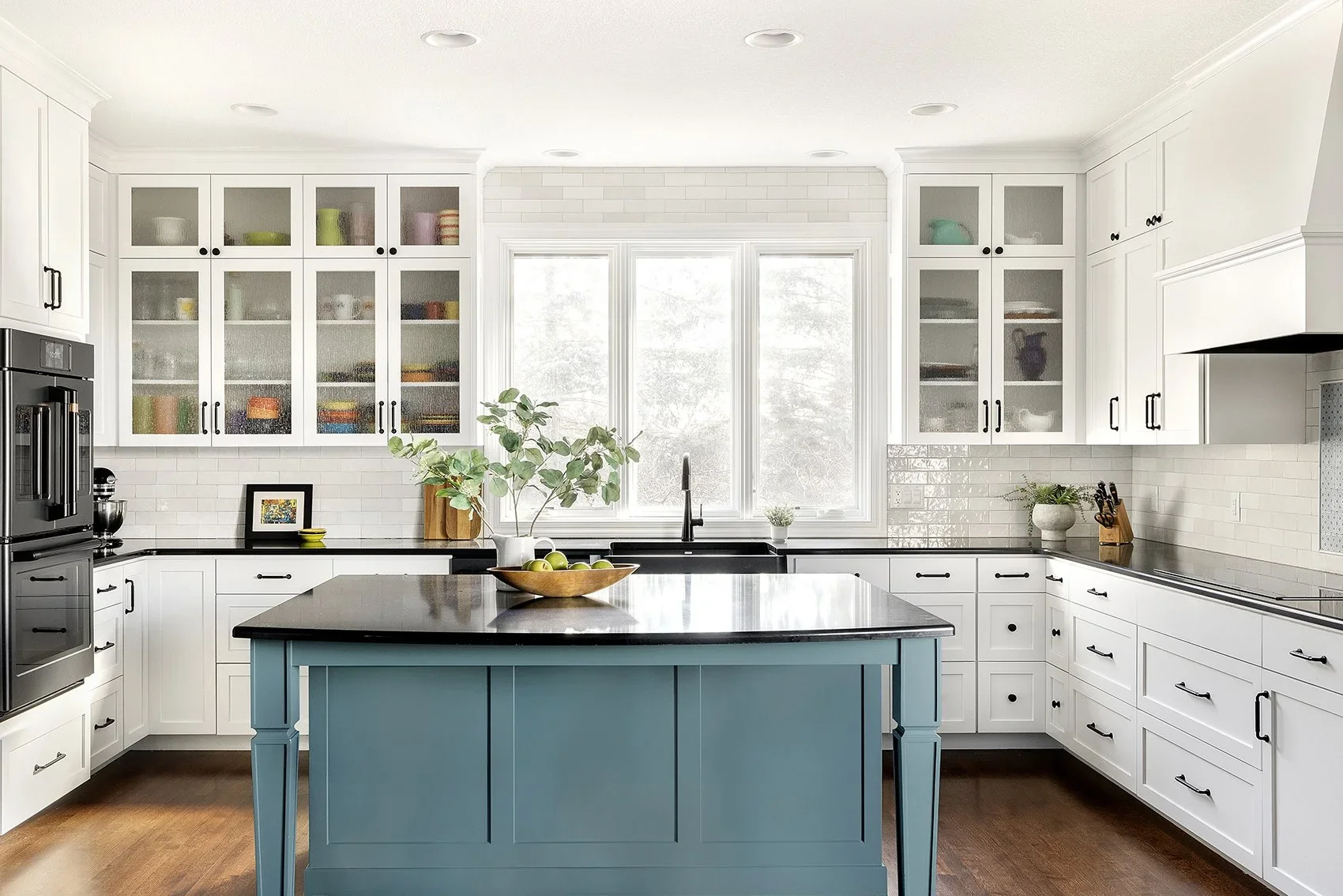What Sparks a Remodel? Real Life Moments That Lead to Big Home Changes
The only constant in life is change. As our families expand and evolve, so do our homes. So, what events spark a remodel? Today on the blog, we’re discussing the real life moments that lead to big home changes. Keep reading for examples of life events that could impact how you live in your home.
New Homeowner
Whether it’s your first, second, or third purchase, most homes aren’t unicorns that include every feature on your wish list. New homeowners often want to tackle any updates before they settle into long-term routines. How do you approach remodeling your new home?
Begin by making a list of all potential changes, then categorize projects by immediacy, for example: right away, someday soon, future dreams
Address anything disruptive, like flooring, layout changes, or wall removal, prior to moving in
If time allows, live in the home for a while before committing to major design decisions
New Baby
Few things transform your life overnight like bringing children into your family. A new baby doesn’t just turn your lifestyle and sleep cycle upside down; they change your entire home. Babies and kids have a lot of stuff; how do you plan for it all?
Lists, lists, lists – after you schedule appointments, register, and plan your babymoon, make a list of any baby-related house projects
Incorporate toy storage throughout your home, not just in the playroom or nursery
Babies start crawling before you know it! Babyproofing now will save you stress later
Whether it’s a separate playroom or an integrated space, create an area where the baby can explore freely and safely
Teens + Growing Kids
The only people who have more stuff than babies are older kids! From school supplies to sports equipment to hobbies, toys, and other treasures, kids are always collecting things. How do you create a kid or teen-friendly home while also keeping the clutter at bay?
Start with storage – giving everything a home is half the battle
Cast a vision; dreaming of a playroom, teen hangout, ninja obstacle course, or homework station? Create a mood board with everything that inspires you
Remember, kids change a lot; try not to constrain yourself to an obvious theme or passing hobby, leave room for your kids and their style to grow
Involve the kids in the process in age-appropriate ways, such as weighing in on colors, patterns, bedding, textiles, or artwork
Aging in Place
Your physical needs evolve a lot over time. We all know that a thirty-year-old’s body is vastly different from a seventy-year-old’s. If aging in place is part of your long-term plans, then your home will likely require adjustments and customization. So, what sort of modifications are common when promoting lasting accessibility?
First, walk through and assess your home for potential problem areas and safety issues
When making your list, consider ease of movement: are the pathways clear? Can you live independently? Are there any obvious trouble spots or hazards?
Common areas to address could include widening doorways, motion-sensor lighting, non-slip flooring, tripping hazards, grab bars, railings, and accessible hardware/door handles
Consider installing a security or alert system in case of medical emergencies
Adapting After a Life Event
Similar to aging in place, major events can alter how we live in our homes. Whether it’s a medical diagnosis, accident, or injury, life happens. Odds are, one or many things will impact how you maneuver comfortably around your home. What renovations would make things safer and easier?
The Minnesota Council on Disability’s website has many resources on creating accessible housing, such as a Guide to ADA Standards, a Home Accessibility Checklist, and a how-to on Adapting Your Home for Wheelchairs
Many accessibility updates are similar to those who plan to age in place listed above; however, complex diagnoses often include specific medical needs
Collaboration with your medical team for guidance can be a huge help when anticipating future needs. Ask questions like, will we need a one-level home? What features help with sanitary needs? Will other caregivers need to live with us or spend time in our home frequently?
Parents Moving In
Multigenerational living is less common in the US, but it can be a real gift for families. Whether your parents or in-laws have physical needs or are simply lonely, that extra time together benefits family members of all ages. How can you prepare your home for parents or in-laws moving in?
Begin by discussing and drafting a list of any safety and accessibility needs
Determine what level of communal living you’re happy with – a bedroom down the hall is quite different than a basement in-law suite or backyard tiny home
If you plan on fully separate spaces, consider adding a private entrance, bathroom, and at least a kitchenette
Working from Home + Hybrid Work
The nature of work has changed massively since the Pandemic. Flexible schedules, hybrid work, and remote positions have become the norm. If you’re transitioning to a new work arrangement, an updated home office would probably serve you well. So, how do you design a functional home office?
Your first task is to determine what features your job demands – would any upgrades help you work better from home?
Set aside a private space if you need complete silence to concentrate, avoid family disruptions, or absolute privacy to meet ethics or medical standards
Incorporate finishes that reflect your style and working rhythm; maybe you focus better standing, sitting, on a couch, or at a wide-open table
Don’t forget organized storage, such as built-ins, bookcases, tech equipment, charging or docking stations, and a coffee or snack station
Addressing Deferred Maintenance
No matter how diligent you are about staying on top of things, home maintenance surprises catch us all. If there’s one thing we know, it’s that every home has its quirks, whether it’s new construction or a historic property. So, where do you start when addressing deferred home maintenance?
Take it one step at a time; a years-old problem won’t often get solved in an afternoon
Bring in a time-tested team to guide you through the process and offer trustworthy advice
Prioritize your to-do list based on project urgency and budget, then set a schedule
Lastly, put plans in motion to avoid future maintenance backups
Lifestyle Upgrades + Wellness Journeys
Our physical and mental health impact every part of our lives, including our homes. An essential piece of any wellness journey or lifestyle change is consistency. From discovering a passion for meditating, cold plunges, yoga, weight lifting, or saunas, how do you create space for a new wellness journey at home?
Whether it’s large or small, construct a space that’s peaceful, private, and free from distractions
Give yourself room to grow; hobbies flex and evolve, make choices with adaptability in mind
Seek expert advice – a customized space requires a more tailored design approach
Choosing to Upgrade Instead of Move
Every homeowner who’s outgrown their space has the same dilemma: do we remodel or move? Either path has benefits and drawbacks; however, staying in a place you already know and love is hard to beat! Once you’ve committed to renovation, then it’s time to ask yourself, what upgrades would make living here easier and more enjoyable?
Dream big first, then narrow down – list out every problem area, structural issue, or dated style in your home that you want to address
The next step is to set your budget, which will then determine the scope of your plans
Connect with an established, trustworthy remodeler who can guide you through the process
Preparing to Sell
If you’ve ever sold a home, you know it’s a whole different beast. Upgrading, right-sizing, or relocating are all complicated life phases of their own; the last thing you need on your plate in addition is seller’s stress! How do you prepare to sell your home without the headache?
Before you do anything, find a Relator you trust to take stock of your home
Consider getting a pre-inspection to uncover any issues before potential buyers do
Inside, focus on decluttering and depersonalizing your spaces
Outside, fix any glaring hazards or damage and improve curb appeal
Ready to Start?
Are any real life situations causing big changes in your own home? Our team helps homeowners navigate the remodeling process every day – it’s our specialty! Whether your project was listed above or is something else entirely, we’ll work together to figure out what’s best for you and your home.





